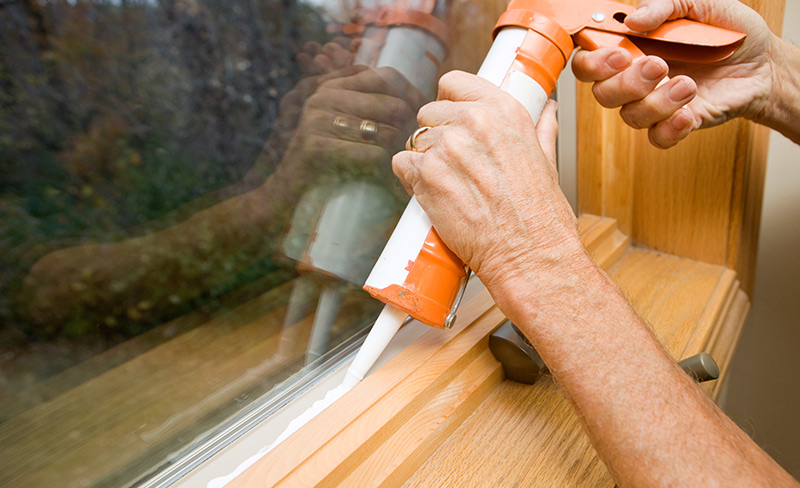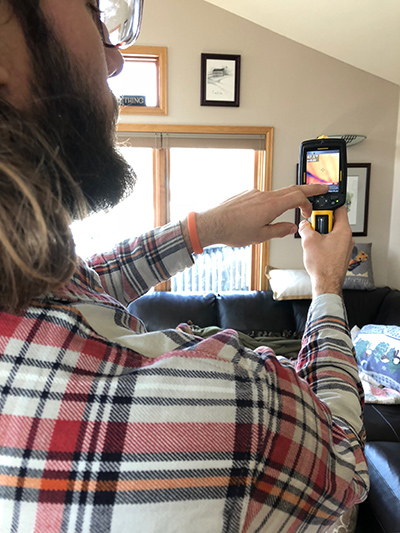
Dear Eartha, Is there anything in preparation for winter I can do to help curb my pricey energy bills? I’m trying to postpone turning my heat on as long as possible, but don’t want to sacrifice comfort.
When my boiler kicked on last week for the first time this year, I figured it was the right time of year to get in front of this important question. When I speak to Summit County locals about energy conservation and home energy efficiency, their perspective is often crippled by thoughts of expensive and complex mechanical systems, or a home full of pricey windows and doors. Little do they know, they’re starting our conversation on the wrong end of what we call the home-energy pyramid.
The good news is, energy conservation and feeling comfortable in your home are pursuits that should never begin with these pricey fixes, but rather with simple and affordable projects we coin the low-hanging fruit.
We need to understand that the most common solutions to home comfort and energy efficiency are simple. They include proper air sealing and insulation, proper thermostat programming, and effective ventilation. These projects support the bottom of our home-energy pyramid, upon which more invasive projects such as new insulation and mechanical systems rest atop. At the peak of our pyramid are windows/doors, and renewable energy. They remain at the top because they should only be pursued after all base improvements have been made.
A home full of new windows or a new solar system on a poorly lit, leaky, and inadequately insulated home will result in diminished returns on your investment and poor system performance.
If you’re seriously considering an energy efficiency improvement for your home, or even if you want to learn more about what can be done to reduce your energy bills and improve comfort, you should start with an energy audit of your property. Have a certified building analyst audit your home for both potential safety concerns and energy efficiency. Visit EnergySmartColorado.com to request a home energy audit beginning at $100. You’ll receive a comprehensive report outlining areas for potential improvement as well as expected annual savings. The most important first step in home energy efficiency is education. Know what it is your home truly needs. Maybe it is a solar system, or maybe it’s something more simplistic — something you never knew your home was even lacking.
The goal of improving the energy efficiency at your home is to address a number of building concerns. When we make weatherization improvements to a property, it yields results beyond lower energy costs. We are creating a healthier home, a more durable home, and a home that is more comfortable to live in. This is why we love answering all of your energy questions because we can sell the benefits of any given energy improvement project from a number of angles. The bottom line is, that doing something will pay off, and we’ve seen it pay off for residents time and time again.
In our unique mountain climate zone, oftentimes some of the lower-cost energy improvements yield the greatest return. Roughly 40 percent of our winter heating costs can be attributed to a leaky home. Air leaks in a home are my arch nemesis. They can come from anywhere in your home, window trim, baseboards, attics, basements, and crawlspaces. When homes are built, sometimes the small holes are overlooked or concealed behind trim. However, these holes all add up to one big hole, a hole that is wasting your money and creating a less comfortable home. Equipped with an infrared camera and a large door-mounted fan, a local energy auditor can pinpoint the air leaks in your home. Then with low-cost products like caulk, spray foam and weatherstripping, an experienced energy auditor can often weatherize your entire home for a reasonable price. That’s the ‘one-two’ punch.
Adding insulation to your walls, crawlspace or attic are great ways to further capitalize on your air-sealing project. Of course, a comprehensive energy audit will also point out room for improvement with inefficient home appliances, heating systems, and indoor lighting. Sometimes, a quick project such as swapping out your lighting to modern LED technology can pay for itself within one year.
Regardless of what improvements you plan to make at your property, several simple do-it-yourself preparations can apply to almost any property. First of all, make sure your thermostats are properly set up to conserve energy at nighttime and during the middle of the workday. If you don’t have a programmable thermostat in your home, consider installing one to combat human error. There’s great value in technology that makes our lives easier and reduces the time we spend thinking about and tweaking the comfort of our indoor environments.
Next, consider lowering the temperature on your water heater to reduce the energy demand on your water heating appliance. A lower water temp will also reduce the amount of cold water mixing required to achieve a more desirable temperature while showering or washing your hands.
Finally, be cognizant of those drafty or cold rooms. Install insulated window blinds or thick drapes over colder windows. Install foam gaskets around those leaky switch plates and outlets. And of course, if you can see daylight through the perimeter of your exterior doors, it may be time for some new weather stripping.
Again, in our climate zone, these simple steps to reduce air leakage can be some of the most beneficial improvements you make.



